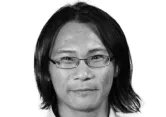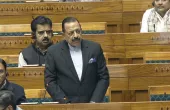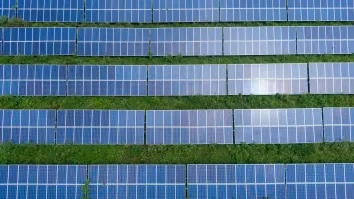Solar power development in Southeast Asia
By Eric HoAs renewables markets mature, renewables investors are looking to new markets for their next source of growth. Solar photovoltaic (PV) generation has great potential and has been the most attractive renewable energy source amongst the Southeast Asian nations. Annual solar radiation levels in the region ranges from 1,460 to 1,900 kWh/m2/per year. Growth prospects are tremendous in Southeast Asia with a combination of fast-growing economies with resulting investment in manufacturing, transportation and energy infrastructure, rapid growth in electricity demand and good solar resource.
Singapore’s Appeal as a Solar PV Market without FiT
In 2015, installed capacity of solar power in Singapore was almost 60 MWp as it doubled at the end of 2016 to 126 MWp. Singapore plans to install 350 MWp by 2020, increasing the generation threshold to 600 MWac based on the largest available reserve unit in the system.
The city-state has made significant investments in research and innovation around energy sustainability. In 2016, Singapore announced more than US$ 700 million of new public-sector R&D funding for the next five years for Urban Solutions and Sustainability. This funding is expected to strengthen Singapore’s innovation capacity in areas such as clean energy, smart grids and energy storage. The potential for urban solar plants and floating solar on its precious reservoirs are presently being tested. A project to accommodate more intermittent sources in energy storage for the efficient consumption of energy is also being studied in a microgrid system. Singapore expects to fully liberalize its electricity market in 2018 allowing all consumers including households to choose their electricity suppliers.
Instead of direct subsidies to spur solar PV installation, Singapore offers competitive, market-driven tariffs, together with measured policies to promote a competitive solar market. Consumers with embedded intermittent generation sources are allowed to receive ‘net-settlement’ of the energy component i.e. consumers are either charged for their net consumption or paid the energy price for their net generation within each trading period. The average energy prices in June 2017 was about US$ 61per MWh.
Net Metering Scheme to Complement FiT in Malaysia
Malaysia’s overarching policy framework for clean energy development has provided a strong foundation for significant deployment of renewable energy and energy efficiency. It adopted a renewable energy feed-in tariff (FiT) mechanism under the country’s 2011 Renewable Energy Act and revised the solar FiT with a degression approach in 2014 in response to falling panel price and changing market conditions. The net metering scheme (NEM) was introduced in 2016 with 500 MW NEM targeted in 2020 in Peninsular Malaysia and Sabah. With the NEM in place, consumers can generate their own electricity with one meter installed and sell excess power to the national utilities. The country presently has 338 MW solar PV capacity installed and targets 1,356 MW by 2020.
Under its FiT scheme, the installed capacity increased modestly by about 30% each year in 2015 and 2016, to 335 MW at the end of 2016. Basic FiT in 2017 for installation below 72 kW is 52.18 sen/kWh (12.17 US¢/kWh) with a potential bonus FiT of up to 34.55 sen/kWh (8.06 US¢/kWh).
Credit for excess electricity to NEM consumers will be based on the prevailing displaced costs for the supply voltage at the point of common coupling. Energy exported to the distribution line is calculated at a displaced tariff, prevailing at 23.8 sen/kWh (5.55 US¢/kWh) for the Peninsular and 22 sen/kWh (5.13 US¢/kWh) in Sabah. Credits will be rolled over for up to 24 months, after which all credits are forfeited.
Indonesia’s New Renewable Energy Law
The adoption of solar PV in Indonesia has been slow and uneventful. Stringent regulations, tariff uncertainty and more lucrative alternatives have left the solar sector grossly underdeveloped. Currently only about 27 MW solar capacity was installed, with a majority from state-sponsored power plants, while the remaining capacity are small projects and home rooftop systems, which have an easier time of being realized in the present regulatory climate. The recent tariff cuts have cast doubts on the prospects of future large-scale solar projects as the country plans to add some 870 MW of solar power capacity by 2024.
Early this year, Indonesia brought in a new renewable energy law that changes the remuneration tariffs for renewable energy projects. Under the new law, a FiT cap is introduced based on the average electricity supply costs of the region where the renewable power project is to be developed. Where a region has supply costs above the national average, the FiT will be capped at 85%. If a region has an electricity supply cost lower than the national average, then the renewable energy project will receive a FiT equal to the regional cost. Solar PV FiT under the previous scheme ranges between 15 to 23 US¢/kWh.
With the national average supply cost in 2016 was 13,307 IDR/kWh or 7.4 US¢/kWh, the new decree implies a significant reduction in solar PV technology tariff 50% (to between 6.5 to 11.6 US¢/kWh) from the previous FiT. FiT are also fixed throughout the term of the PPA under the new law, where else PPA tariffs for conventional power projects are subject to foreign exchange and inflation adjustments. The new law puts solar power in direct competition with coal-fired power plants being the predominant form of power generation in Indonesia, making it extremely challenging for solar.
A Net Metering scheme is available for residential and commercial rooftops which was mandated in 2013, obliging PLN to credit excess energy produced by solar through a bidirectional meter to a customer’s account. Credits will be carried forward indefinitely.
Thailand, The Regional Solar Leader
Thailand is the largest producer of solar energy in Southeast Asia. Solar capacity has grown from 1,299 MW in 2014 to 2,021 MW in 2015 as it ended 2016 with over 2,800 MW, which is higher than all other Southeast Asian countries combined. It aims to install 6,000 MW by 2036.
Because of Thailand’s experience with large solar farms and its promoting policies, it forms a hub for PV testing services and a source for information. Solar energy projects are offered the highest FiT subsidies. Beginning with an ‘Adder’ scheme for all renewable energy generation up to 90 MW, solar power had an adder of 8 THB/kWh or 23 US¢/kWh for a 10-years term. This was replaced with a 25-years FiT scheme with a tariff of 5.66 – 6.84 THB/kWh or 17 to 20 US¢/kWh depending on the generator category. With the collapse in solar panel prices, so did the FiT offered, presently at 4.12 THB/kWh or 12 US¢/kWh with a 25-years period, much to the industry players disappointment.
In the past years, several FiT programs for smaller solar energy projects were created with very attractive rates. By giving the highest FiTs to the smallest producers, the government aimed to promote green energy communities and small-scale rooftop programs. The government showed a strong position to transition away from giving premium price FiTs (6.96 THB/kWh or 21 US¢/kWh for residential) for rooftop solar system by initiating a ‘Rooftop PV Self-Consumption’ Pilot Scheme. This pilot scheme is not a net metering scheme which means that electricity generated from the rooftop PV system must be consumed on-site (self-consumption) and any excess electricity fed into the grid will not be compensated for.
Fresh Solar Power Policy And Legislation In Vietnam
The long-awaited policy for the development of solar power projects in Vietnam finally came into effect as Decision No. 11 on 1 June 2017 aimed at enabling the private sector to invest in clean energy sources. FiT for grid-connected projects at the delivery point is approved at 2,086 VND/kWh or 9.35 US¢/kWh, exclusive of VAT, applicable only for solar cells efficiency greater than 16% or modules efficiency greater than 15%. The tariff is adjustable for foreign exchange fluctuations in accordance to the standardized PPA. The standard PPA has a 20- years term with EVN as the sole buyer, as investors continue to enjoy existing incentives such as mobilization of investment capital, exemption from import duty and tax reduction. Decision 11 left many details unaddressed and given the un-bankability of standard PPA for wind and biomass, industry pundits are not expecting much from the solar standard PPA.
The Decision also provides for a net-metering scheme for rooftop projects equipped with bi-directional meter systems. Credits will be awarded if the electricity generated is more than that consumed, and carried forward to the subsequent payment cycle. At the end of the year or when the PPA is terminated, the excess credit can be sold to EVN at the FiT rate.
At the end of 2014, approximately 4.5 MW of solar PV capacity was installed throughout the country, 7 MW at the end of 2015 and with an intention to grow to 850 MW by 2020. Presently there are only a few commercial investments in solar power systems of up to 200 kW which are modelled for self-consumption. International interests remain high, with collectively over 1,000 MW of solar parks in various regions announced.
The Philippines FiT experience
The FiT program drove solar PV development in the Philippines into high gear. Installed solar capacity jumped to 62 MW in 2014. With FiT of 9.68 PHP/kWh or 21 US¢/kWh, six projects were awarded bringing 2015 installation to 108 MW, and by the end of 2016 with a FiT of 8.69 PHP/kWh or 17 US¢/kWh (20-years term and 0.6% degression rate) another seventeen projects made the cut bringing 2016 to a close with 903 MW grid connected installed solar PV capacity. 3.2 MW were also installed by the end of 2016 for self-consumption. Solar PV is expected to reach 3 GW of utility solar by 2022.
The net metering regulations and interconnection standards which went into effect in July 2013 also opened up the whole market of solar roof-top panels below 100 kW in areas that are on-grid in the Philippines. Unlike the FiT program which targets 500 MW awarded on a first-come basis, there are no targets for the net metering market. Excess energy exported to the grid will be given a credit based on the exported quantity at the average monthly cost of generation to the distribution utility (approximately 50% of the retail tariff). Following the release of these net metering rules, there has been a marked increase in activities in the industry, and it is expected that this development will only accelerate.
Policy is not that big of a challenge as the strategic challenge to muster the political will to put policy into practice while effectively adapting it to evolving situations. Large scale solar investments are highly FiT sensitive. The challenge is to find an appropriate FiT level which still attract investments while maintaining grid stability in a rapidly declining solar price environment.
Infant solar markets Cambodia, Laos, Myanmar and Brunei
Solar power investment incentives play a major role in the development of solar power industries. In the absence of targeted policies to promote investments in solar power, installed solar capacity in these countries are used mainly in research and rural electrification which are government-backed or donor-funded. Commercial installations are driven by large corporations with a climate change mission.
With the exception of Brunei (rich with cheap electricity supply), poverty levels are the most immediate hurdle to off-grid commercialisation. A more immediate prospect lies in providing rooftop PV-systems for manufacturing factories, hotels and other large-scale industrial users in urban areas and Special Economic Zones (SEZ) which are relying on diesel generators to address power shortages.
Despite policymakers’ reluctance to promote solar as an alternative to other conventional baseload power generation, with increasing interest in solar throughout the region, governments are expected to focus its energy policy on attracting solar investment.




















 Advertise
Advertise







